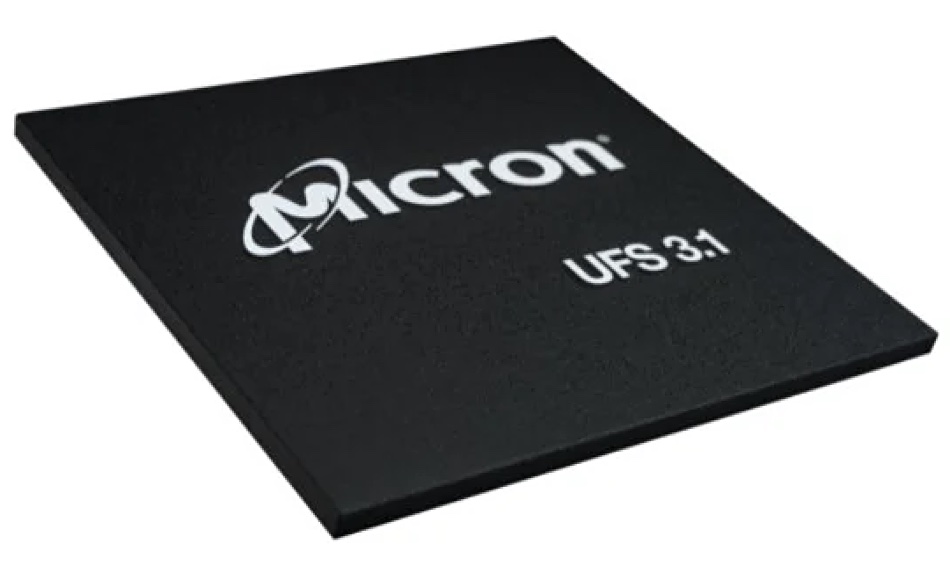Micron has announced new and fast gumstick card SSDs using its newest 176-layer 3D NAND and NVMe across the PCIe Gen 4 bus, plus faster automobile NAND chips and denser DRAM.
It announced shipments of its 176-layer 3D NAND in November last year and this succeeded its previous 96-layer technology, enabling it to cram around twice as much capacity into a NAND chip for a less-than-2X increase in cost.
The news was disclosed by Micron President and CEO Sanjay Mehrotra at a Computex event in Taiwan, who said: “As artificial intelligence and 5G reach mainstream deployment, they are creating dramatic new potential for data in the post-pandemic world. … Today we are debuting new memory and storage solutions that accelerate innovation, from powerful data center servers and faster client devices to intelligent vehicles at the edge.”
PCIe 4.0 SSDs
There are two PCIe Gen 4 bus drives, the 2450 and the 3400, both following on from the existing 2300 drive and both in the M.2 format.
The 2450 is for thin and light notebooks and comes in 256GB, 512GB, and 1TB capacity points with three sizes within the M.2 format: 22×30, 22×45 and 22x80mm. It has a low power consumption of <3mW in sleep power state and <400mW in active idle power state. This drive uses host memory buffer technology, being DRAM-less.

Micron positions the 3400, with its larger capacity range of 512GB, 1TB and 2TB, for use in higher-performance PCs, such as workstations, gaming systems, and high-end corporate desktops. With more space inside the enclosures, it only produces the 3400 in the M.2 22x80mm format.

We’ve prepared a performance table comparing the 2450, the 3400 with the prior 2300 and its PCIe gen 3 bus connection. It shows the increase in speed due to the PCIe 4 bus and also endurance due to the newer NAND:
The 2450 has similar random read and write IOPS ratings to the 2300 but does better in sequential IO, with a nine per cent increase in read bandwidth and 11 per cent increase in write bandwidth. The endurance is near identical, too, with only the 256GB capacity model getting an increase from 150TB Written (TBW) to 180TBW. The 2300 tops out at 2TB whereas the 2450 is limited to 1TB, so the performance improvements are actually quite good.
Things are livelier with the 3400 where the IOPS jump up; max random reads soar from 430,000 to 720,000 per second and writes from 500,000 to 700,000. The sequential bandwidth rockets as well, doubling to 6.6GB/sec for reads and near-doubling for writes to 5GB/sec. The endurance stays the same as the 2300.
Both 2450 and 3400 support TCG Opal 2.01 and Pyrite 2.01 standards for security as well as AES-256 bit encryption. The two will compete with M.2 PCIe Gen 4 drives from Samsung (PM9A3 and 980 Pro), Kioxia (XG7 using 96L NAND), Seagate (FireCuda 520), and Western Digital’s (Black SN850).
Check out a 3400 technical brief here, and a 2450 technical brief here.
UFS 3.1

Micron is sampling 128GB and 256GB densities of its 96-layer NAND as part of its new portfolio of UFS 3.1 managed NAND products for automotive applications.
It says UFS 3.1 offers 2X faster read performance than UFS 2.1, enabling fast boot times and reducing latency for data-intensive in-vehicle infotainment and advanced driver-assistance systems (ADAS). It also provides 50 per cent faster sustained write performance to keep up with data ingest rates from sensors and camera data for Level 3+ ADAS systems and black box applications.
No doubt we will see a 176-layer iteration of this UFS 3.1 chip in the future.
DRAM
Micron is shipping client and mobile LPDDR4x in volume on its 1α DRAM node this month, following the introduction of 1α node DRAM products in January 2021. It says the 1α node process provides a 40 per cent improvement in memory density and up to 20 per cent improvement in power savings compared to previous 1z node LPDDR4x. This is good for mobile phones.
The company has completed 1α-based DDR4 validation on third-generation AMD Epyc processors and other data center platforms, and it didn’t mention gen-3 Intel Xeon SP (Ice Lake) processors in its announcement. Micron is working with Acer on integrating 1α-based LPDDR4x and DDR4 into its PCs.









